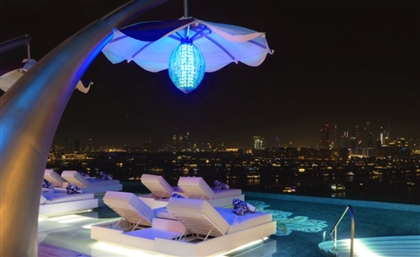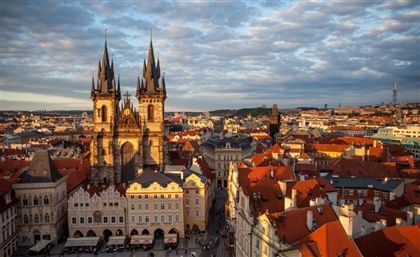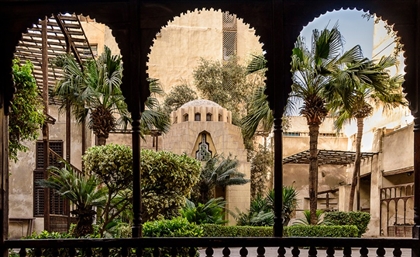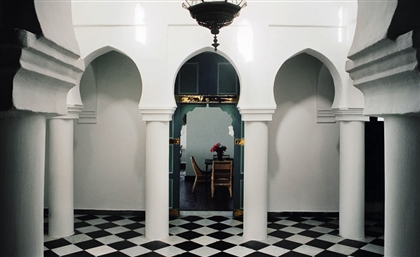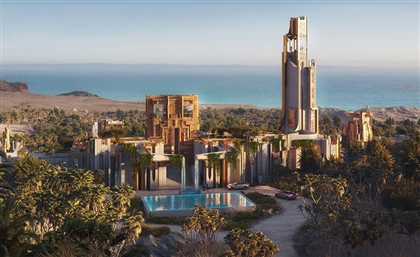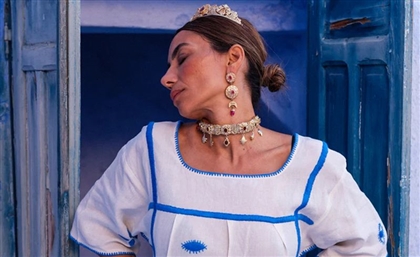A Wild Family Adventure in Nepal
From paragliding in the Himalayas to stalking rare rhinos and sleeping in crystal rooms, Amy Mowafi and her family join Egyptian travel company Wild Guanabana on the adventure of a lifetime to Nepal.
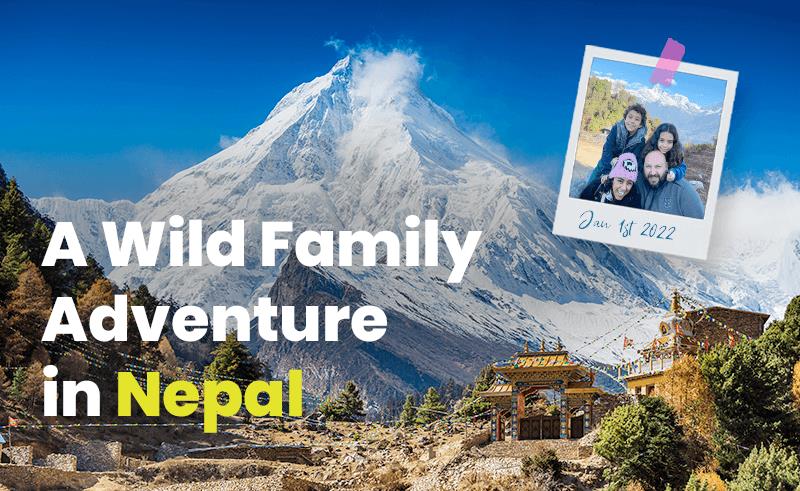
We are huddled together against the fallen trunk of a tree, as per our guide Buddhi’s urgently whispered instructions. Above us is a writhing ancient canopy of twisting branches, lush tropical foliage and monkeys whose presence is felt only in the occasional rustling of the leaves. A giant hornbill swoops low as the jungle emits the sounds of fear warning of an encroaching predator. Perhaps a prowling tiger? And not 10 metres from where we crouch is the elusive ‘greater one horned rhino’. You can’t run but you can hide. Only silence and stillness protect us as we stare in fear-laced awe. We are enthralled. This is what we came for. A chance to see these seemingly prehistoric creatures up close and heart-stoppingly personal. There are only 3700 of them left in the world today and this is only one of two places on the whole planet where they still survive in the wild. My friends Mint ElMokadm (an ethereal being who has built a PoleFit empire in Egypt) and Omar Samra (he of climbing Mount Everest fame and founder of Wild Guanabana, the adventure travel company organising our trip) and I are deep in the heart of Nepal’s Chitwan National Park. Somewhere out there my children (and husband) are trundling along in a jeep, our walk through the bush deemed by the rangers too risky for flighty little ones.(1)(1)(1)(1)-0ef1f5b8-b920-47d2-a5f0-ca40c36e8691.png) Jumping off a cliff however was considered perfectly safe. And so it was that two days earlier, during the final hours of 2021, in the painfully picturesque town of Pokhara, my kids (who are seven and nine years old) and I literally, LITERALLY threw ourselves off the side of the Sarangkot mountain (well technically in these parts a mere 1600 metre altitude is considered a ‘hill’) and paraglided through the heavens. I was terrified - for my kids - but I also did it for my kids. Imagine infusing young minds with the memory of soaring amidst the peaks of Himalayas? With the actual feeling of flying? Imagine what that might do for their imaginations? Fearlessness can’t be taught through words but through actions and I hope they spend a lifetime throwing themselves into the unknown.
Jumping off a cliff however was considered perfectly safe. And so it was that two days earlier, during the final hours of 2021, in the painfully picturesque town of Pokhara, my kids (who are seven and nine years old) and I literally, LITERALLY threw ourselves off the side of the Sarangkot mountain (well technically in these parts a mere 1600 metre altitude is considered a ‘hill’) and paraglided through the heavens. I was terrified - for my kids - but I also did it for my kids. Imagine infusing young minds with the memory of soaring amidst the peaks of Himalayas? With the actual feeling of flying? Imagine what that might do for their imaginations? Fearlessness can’t be taught through words but through actions and I hope they spend a lifetime throwing themselves into the unknown.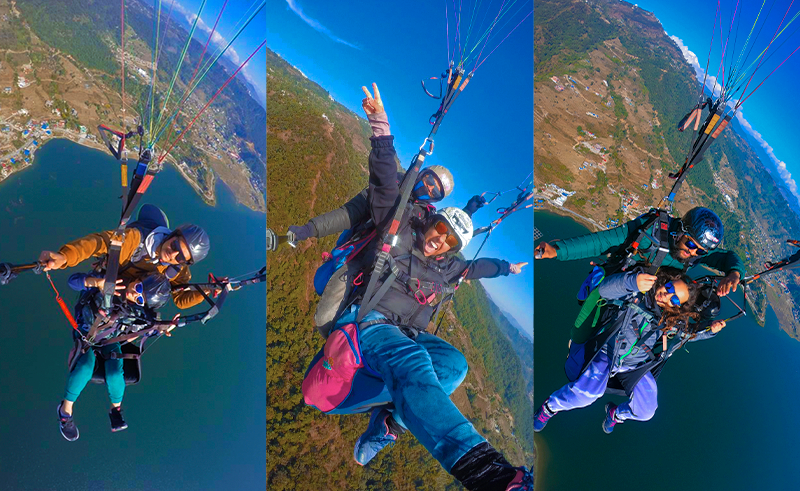 Of course I made them vow never to tell my mother of this particular part of our adventure. If there’s one thing we should always be afraid of, kids, it’s grandma.
Of course I made them vow never to tell my mother of this particular part of our adventure. If there’s one thing we should always be afraid of, kids, it’s grandma.
Once at the bottom of the “hill” we then proceeded to hike right back to the top, a climb that the Wild Guanabana website promised would be “easy” but when, five hours later, my legs begging for mercy, I asked Omar how exactly he defined easy, he began with, “if we were to take Everest Basecamp as a mid-level benchmark,” and I was reminded that definitions, like modern-day truth can be deeply subjective. It’s worth noting however that my seven-year-old son Momo breezily skipped up the mountain, setting pace ahead of a group that included some pretty experienced climbers. Our little adventure had unveiled a genuine raw talent in my son and it was decided that one day soon Momo would follow in Omar’s footsteps and also climb Everest. But we also won’t tell grandma about that.
We arrive at our lodge at the very top of the mountain (I’m calling it a mountain from now on based on my own truth) just after dark and ring in the New Year around a fire beneath a vast canopy of stars entirely unaware the darkness veils a sight more spectacular than I have ever seen.
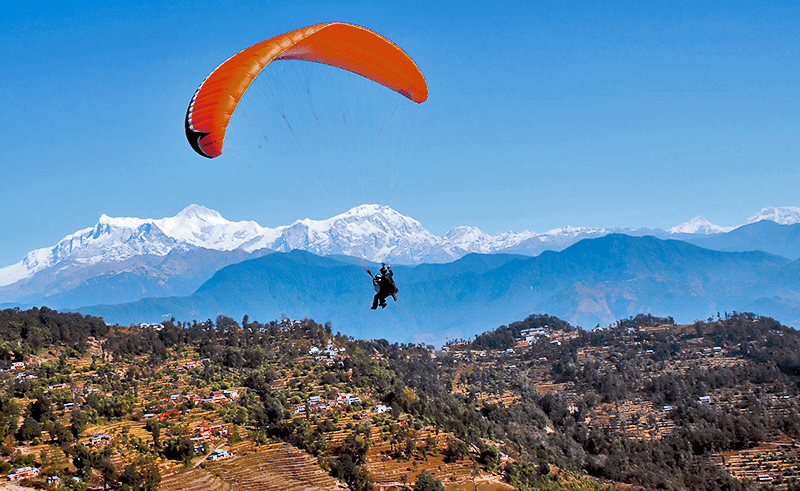 As dawn breaks, we are greeted with our first “close up” view of the Himalayas, the brilliance of the light that beautiful New Year’s Day morning making them feel as if they are virtually on our doorstep.
As dawn breaks, we are greeted with our first “close up” view of the Himalayas, the brilliance of the light that beautiful New Year’s Day morning making them feel as if they are virtually on our doorstep.
The picture-taking is futile because in reality I’m not trying to capture a vista but a feeling and the tech in my hand can never do justice to what the raw power of nature at this scale does to my mind. For a fleeting moment I understand the need humankind has always had to conquer those mountains. We are all in the end driven by the desire for answers, and those peaks, the closest things on earth to the heavens, lure you in with the promise of meaning. The closest you can get to God while still being of this world - your head in the clouds with your feet on the ground. Ultimately they offer a sort of immortality. No coincidence that the scaling of Everest has become a universal metaphor for the ultimate in human achievement.
“They seem so calm,” I whisper to Omar. He points to a peak crowned by a long plume of wind blown snow thrust up into the blue sky. A ferocious storm is raging on the mountain, he explains. The face is but a facade. The serenity is dangerously deceiving and my mind fills with metaphors that make me want to cry.
A couple of days before this we drove down to Pokhara from Kathmandu. In Nepal, 200 km takes seven hours of winding slowly and sometimes perilously up hills and through valleys. Around and around - always the long way around because that’s the only way round - till you reach your final destination. We could have taken a 20 minute flight but Omar, ever the purist, insists we take the scenic route. And I am grateful for it. The opulence of nature becomes more and more pronounced the further you move away from the city. Mountains are everywhere everywhere you look - from the tropical lowlands of the jungle up through the rice-terraced foothills onto those mighty snow-covered peaks of the Himalayas. My usual torrent of thoughts slows into a pleasant meander. Indeed on the way back to Kathmandu from Pokhara - at a rickety pit stop perching perilously on the edge of a “hill” - I mistakenly pee into my boots instead of the hole in the ground, so giddy am I staring at a view straight from a screensaver.
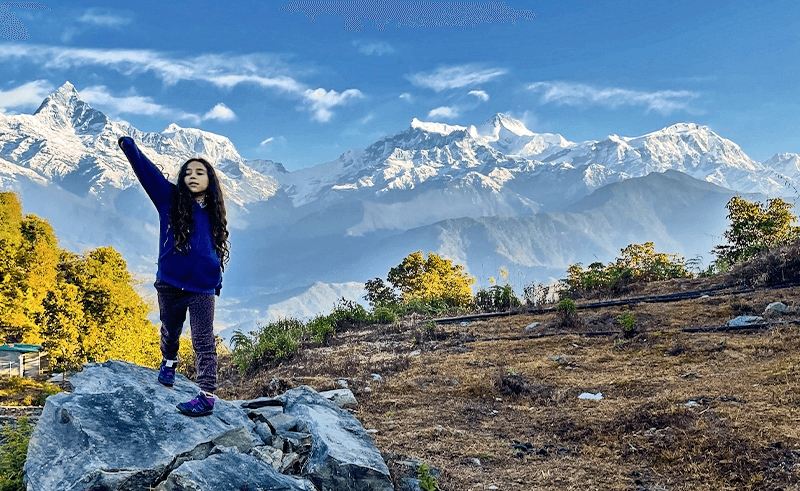
Kathmandu is not what I expected. It is not the mythic Shangrila or Forbidden City that had unwittingly lodged itself in my imagination. It is a chaotic mess of illogical alleyways and cement buildings with little character save for the propensity towards technicolour facades. The pagodas, temples and intricately crafted woodwork that once adorned the entrances of both palaces and homes have seemingly given up the fight for visibility let alone attention, swallowed up by the traffic and the uncontrolled urban sprawl. There is an incongruity between the pristine beauty of the surrounding natural landscapes and the ramshackle chaos of an elemental city unshackled. Of course it’s worth remembering this is a country that moved from the middle ages to the millennium in the span of 50 years, a paradise that was for so long beautifully hidden - or perhaps trapped - by the Himalayas and entirely forbidden to foreigners until 1953… after which the onslaught naturally began.
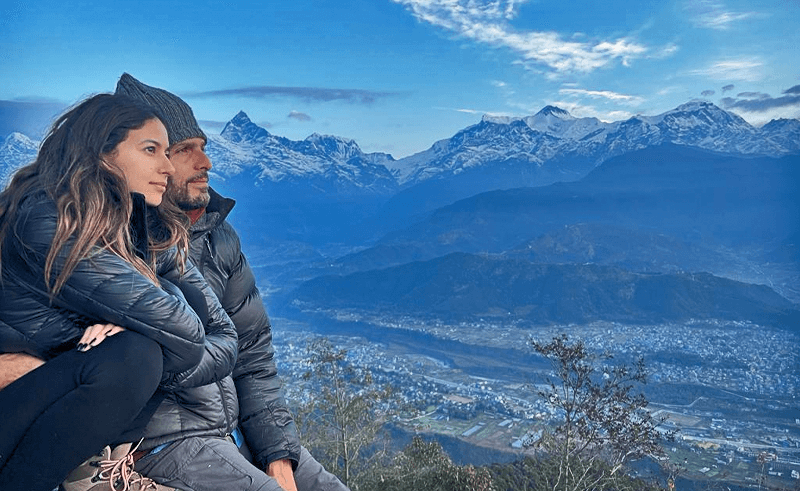
Omar, who has been to Nepal 22 times, stalks through the streets of Thamel - Kathmandu’s Downtown - like a local and I scurry behind him, weaving my way through the teaming labyrinth of mercantilism. As a Cairo native the barrage of humanity barely registers, and I’m especially excited for our destination, a legendary bookstore he regaled me with stories of before we flew out to Nepal. He tells me how he would while away whole days in that store after a big climb, and knowing that we share a love of books, arranges for us to break away from the group on our own little literary expedition. The Pilgrims Book House is a revelation and for me the highlight of the city. A veritable treasure trove of achingly rare first edition finds locked away in dusty bookcases of glass and wood as well as floor upon floor of books for every possible interest from every possible era. One day I will go back for that beautifully bound and illustrated Don Quixote, the early edition Mark Twain and the 1950’s Evelyn Waugh. The collection of rare books being way above my pay grade I find myself sitting instead on the floor contentedly just brushing my fingers across storied spines. I stumble across a coffee table book featuring an aerial shot of Kathmandu in 1960, and the valley is almost empty save for the walled courtyards and temples of the Kathmandu Durbar Square and the old royal palace of the former Kathmandu Kingdom, now a UNESCO World Heritage site. It dawns on me that Kathmandu was never built. It just grew up… too fast. And the suddenness of its pseudo-modernization has been steadily suffocating its soul.
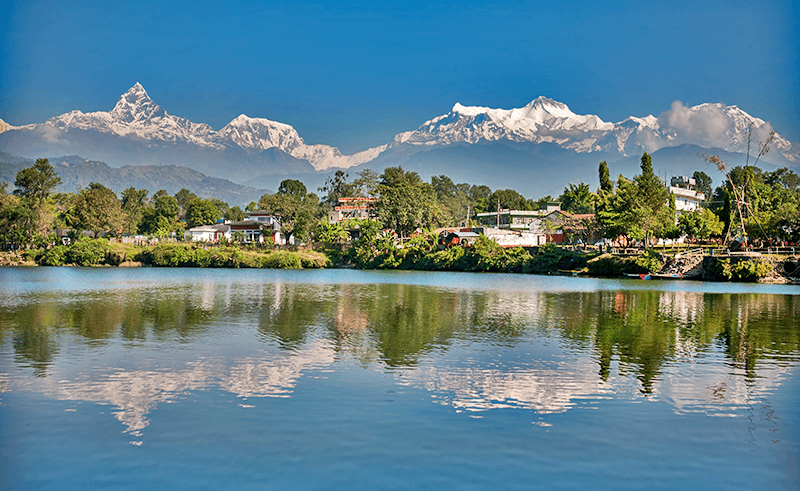
One family desperately trying to hold on to that heritage are the Shresthas, who have built an ode to Nepalese architecture, culture and craftsmanship with the eponymous Dwarika’s Hotel in the Battisputali neighbourhood. Both the family and the property have achieved somewhat iconic status, with everyone from Prince Charles to the Clintons having bedded down for the night in one of the suites nestled in Nepali houses congregating around a leafy central courtyard. Like all legendary hotels, the origin story is at the heart of Dwarika’s allure...
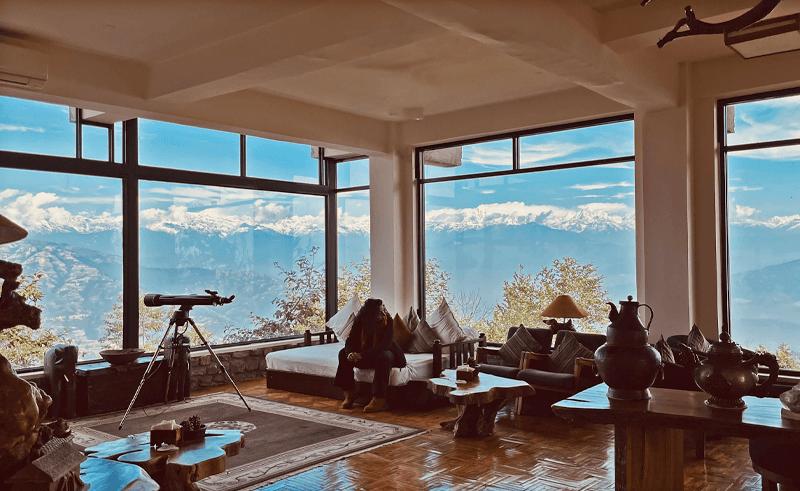
It’s 1952 when a Mr. Dwarika Das Shrestha stumbles across a group of youth who are about to cut up an intricately carved wooden pillar of a demolished old building to use as firewood. These types of wood carvings are at the very heart of Nepalese architectural heritage with each pillar, door and window frame telling a unique story born of literally thousands of hours of craftsmanship. Dwarika convinces them to sell him the wood and in that very moment his lifelong effort to save and reuse these historic carvings begins. The originally-saved wood is then placed in a guest room, which would unexpectedly prove to inspire such interest that more guest rooms are built using these traditional wood carvings. And so the hotel finds its embryonic beginnings. Today it boasts the world's largest private collection of wooden carvings. Shrestha passed away in 1992 but his legacy lives on through the workshops and cultural centres he created, but above all through his family who continue to run the property.
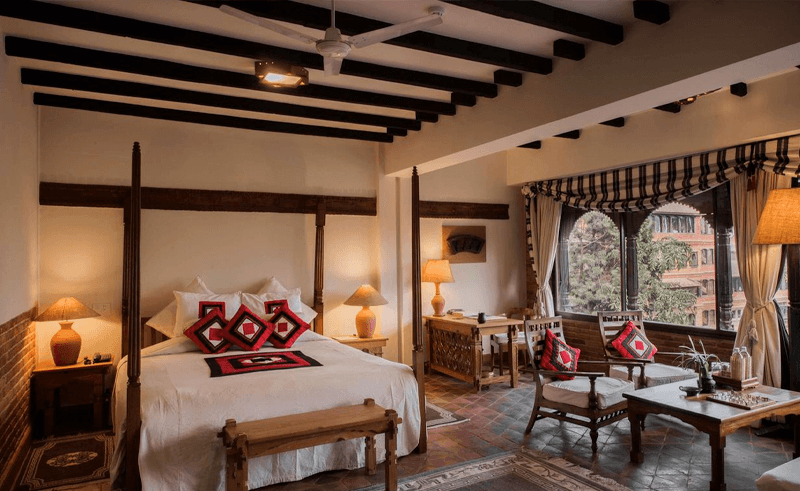
We are shown to our sumptuous suite, a welcome haven of historic luxury after days of hiking and jumping and tumbling into bed in little lodges on the sides of “mountains” and always always taking the (very long) scenic route.
While Wild Guanabana may be known first and foremost for adventure, they are ultimately a unique travel company with true insider knowledge, so they can and will customise any of their trips to your liking. My deal
with Omar was that I would acquiesce to his rouge wanderings, I would climb the mountains which he insists on calling hills – all of which obviously would make me a better person and be life-changing etc etc - and then afterwards his team would arrange a second part of the trip that would mainly involve spa treatments and soothing my glutes after all that hill, nay MOUNTAIN, climbing.
The next morning we set out on the final part of our extraordinary adventure in this land of magic and mountains - the Dwarika’s Resort in Dhulikhel, a sister property to the Dwarika’s Hotel. An hour’s drive from the city, on the Eastern rim of the Kathmandu Valley, this is not so much a resort as it is a 22-acre alternate reality where you while away your days in crystal chambers and Himalayan salt rooms, where you meditate perched somewhere between the heavens and earth and where someone is always on hand to align your chakras. Our two-floor suite floats above the morning mist where a monkey languidly stretches at the foot of my four-poster daybed as I sip my freshly brewed coffee and soak in the serenity. Drawing on ancient Hindu scriptures, Buddhist medicine and traditional Himalayan knowledge, the resort is founded on a philosophy of respecting nature and the self. I don’t so much find my ‘self’ here as throw it into every healing, bettering, life-affirming activity on offer from consulting the Ayurvedic doctor to singing-bowl therapy to opening up my ‘vagina chakra’ in a tiny hut on a hill (all included with your stay). Even when the kids – having been cajoled into a sound healing session – decide to inform fellow guests that, “Daddy snored and mummy mostly farted,” I refuse to be deterred. So we do pottery as a family, and art as a family and we wander through the ‘meditation maze’ as a family. We even practice our reading as a family by forcing the kids to read out loud every single one of the dozens of brass plaques peppered around the resort featuring inspiring quotes and affirmations.
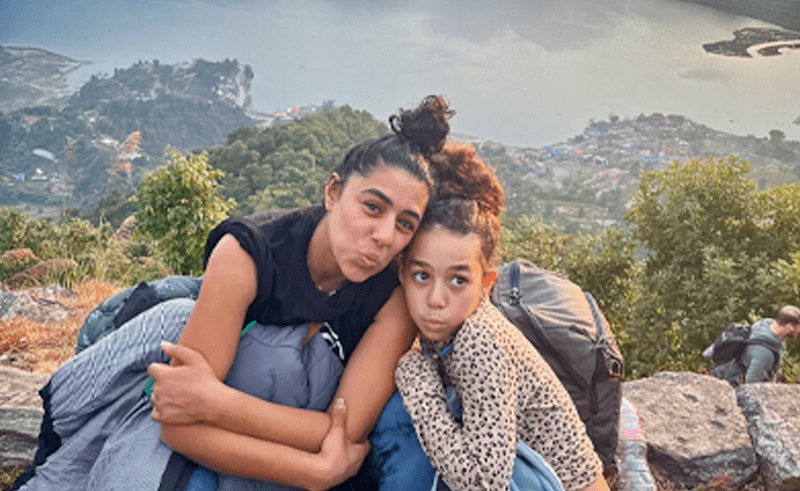
And at the end of each dreamy day, once the kids have been bathed in our pebble-floored bathroom, once they have been tucked up into bed with the hot water bottles carefully laid out for them by the resort’s staff along with a coloured scarf for the next morning (each a different colour chosen by Nepalese tradition as being optimal for that day of the week), I wander over to the most spectacular reading room I have ever come across right at the top of the resort, to just sit and gawp at the heartbreaking and life-affirming loveliness of the sun-setting over those haunting Himalayan peaks.
On our final morning, as we reluctantly leave Dwarika, Nepal and our extraordinary and yes – as promised – life-changing Wild Guanabana adventure behind, there is one last plaque which I ask the kids to read: “You only live once, but if you do it right, once is enough.”
- Previous Article Dr.Sisilove or How (Not) To Diffuse A Bomb
- Next Article Hesham Nazih Wins UK Award For His Work on Pharaohs' Golden Parade
Trending This Week
-
Apr 23, 2024




